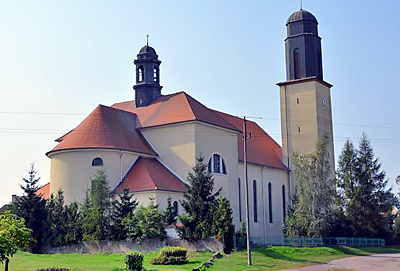Pierwsze wzmianki o osadzie Gołańczy sięgają roku 1222. W roku 1399 Gołańcz nazwana została miastem, a w dokumencie wspomina się o obywatelu miasta Gołańczy, mieszczaninie Sieciesławie. Od początku swego istnienia należała do rodu Pałuków-Gołańczewskich, a następnie do ich następców. W barwnej historii Gołańczy bywały okresy, że traciła ona prawa miejskie i ponownie je odzyskiwała. Była niszczona przez obcych najeźdźców i odbudowywana później przez jej mieszkańców i dziedziców.
Największego spustoszenia miejscowość doznała w 1656 roku, podczas najazdu szwedzkiego. 200-osobowa załoga miejscowego zamku złożona z miejscowej szlachty i chłopów stawiała bohaterski opór najeźdźcy. Zginęło wówczas w całej Gołańczy aż 425 osób.
Następnie Gołańcz stawała się własnością kolejno rodów Flemingów, Przebendowskich, Malechowskich, Mielżyńskich, Czarneckich i Hutten-Czapskich. Mieszkańcy Gołańczy i najbliższej okolicy brali czynny udział w powstaniach narodowych, a szczególnie wyróżnili się w powstaniu wielkopolskim.
Najsłynniejszymi zabytkami Gołańczy są ruiny zamku z XIV wieku, niewiele młodszy gotycko-barokowy kościół i klasztor pobernardyński, a także urokliwy rynek o zabudowie z przełomu XIX i XX wieku.


